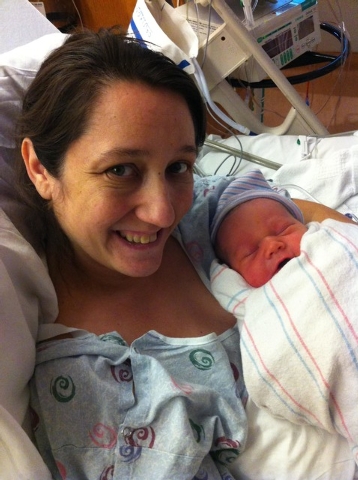Early warning signs of stroke are not to be taken lightly
May was Stroke Awareness Month, but a stroke can strike at any time. According to the American Stroke Association, someone in the U.S. has a stroke roughly every 40 seconds, and about every four minutes, someone dies from a stroke.
Southwest-area resident Naomi Beigel, 68, had a stroke while having hip replacement surgery on April 8, 2010, at Centennial Hills Hospital, 6900 N. Durango Drive. She recalled the wooziness she felt as she came out of anesthesia to a flurry of activity around her.
“They were taking my vitals,” she said. “Then they were yelling at me, ‘Are you a stroke patient?’ I said, ‘No,’ and they said, ‘You are now.’ “
When fully awake, Beigel discovered that her entire left side was paralyzed. Once out of danger, she was transferred to Summerlin Hospital, 657 N. Town Center Drive, where she underwent physical therapy. Her core muscles were affected, and it was four weeks before she could sit up. Therapy helped her regain most of the use of her left side but some issues remain, especially with her hand. Determined to regain her life, she uses a game program called Brain Age to ensure her mind remained sharp.
“The left side of my face was droopy,” Beigel said. “They told me if you rub your cheek very hard, you’ll get the muscle tone back. I think I probably took the skin off.”
Spring Valley resident Dorothy Blake, 35, had her stroke on Jan. 10, 2013, 12 days after giving birth to her fourth child. She was watching television upstairs when she developed a sudden and severe headache. She discovered she couldn’t move her left side and used her cellphone to call her boyfriend, Brian, who was downstairs. He saw how her face was half paralyzed and called 911.
“I thought it was going to pass,” she said. “… I kind of knew something was wrong, but I think that, as women, we don’t react to our own (symptoms) because we’re used to taking care of everybody else. When they did the scan at the hospital and told me I’d had a stroke, I was, like, ‘Strokes happen to old people.’ ”
Hers was a bleeding type of stroke. She was hemorrhaging blood into her skull. Blake was in intensive care for 21 days, followed by weeks of physical therapy. She now walks with a cane and hopes to regain full use of her muscles.
“It’s important for people to realize it does happen to people of younger ages,” she said.
The No. 1 stroke risk factor is high blood pressure. About 77 percent of people who suffer a first stroke have a blood pressure reading higher than 140/90 mmHg. Lowering the top number by 10 or the bottom number by five may cut one’s risk of stroke in half. A free stroke risk assessment tool is available at strokeassociation.org/strokemonth. If you are at risk, work with your doctor on a prevention plan.
Time is of the essence when a stroke occurs. Additional signs include a sudden, severe headache with no known cause; sudden trouble walking; dizziness; loss of balance or coordination; sudden trouble seeing in one or both eyes; and sudden confusion or trouble understanding.
Since 1949, the American Heart Association has spent more than $3.3 billion on research into cardiovascular diseases and stroke.
Eighty percent of strokes can be prevented. Risk factors include high blood pressure; migraine with aura (a migraine that’s preceded or accompanied by sensory warning signs or symptoms, such as flashes of light and blind spots); atrial fibrillation (an irregular and often rapid heart rate that commonly causes poor blood flow to the body); diabetes; depression; and emotional stress. These tend to be stronger or more common in women than men. Atrial fibrillation increases one’s risk of stroke by up to five times.
Cigarette use has been identified as another risk factor. Current smokers have two to four times the stroke risk of nonsmokers (or those who quit more than 10 years ago).
Approximately 15 percent of all strokes are preceded by a transient ischemic attack, often called a “mini stroke” or a “warning stroke.”
Beigel said her disability is not always understood by the casual observer. When she’s shopping, she said patrons will stare at her in her motorized wheel cart, and “they look at me like I’m a lazy woman because I don’t show signs of having had a stroke in my face. All I do is speak very slowly. Then they realize that there is an issue of some sort.”
Contact Summerlin Area View reporter Jan Hogan at jhogan@viewnews.com or 702-387-2949.























